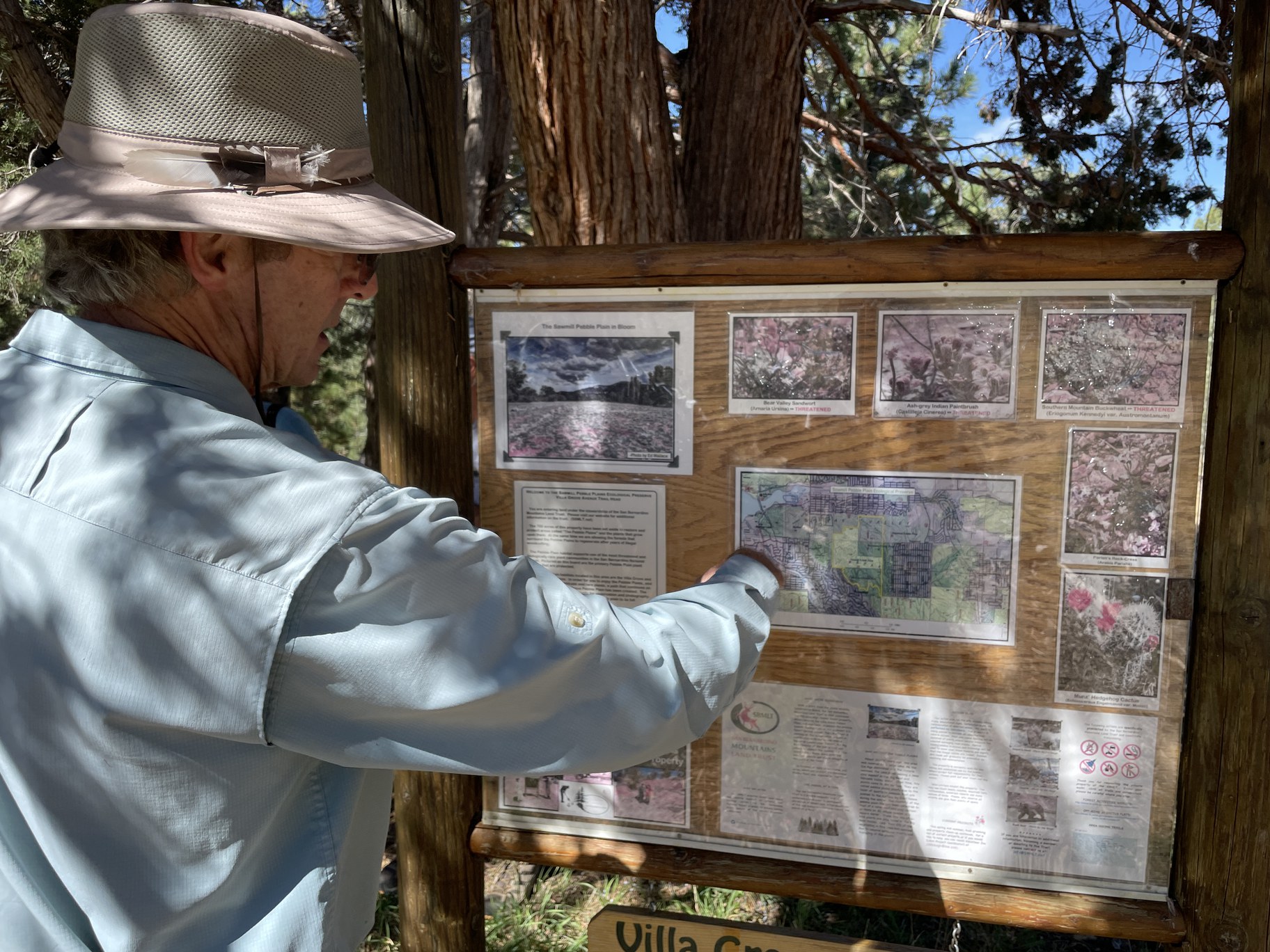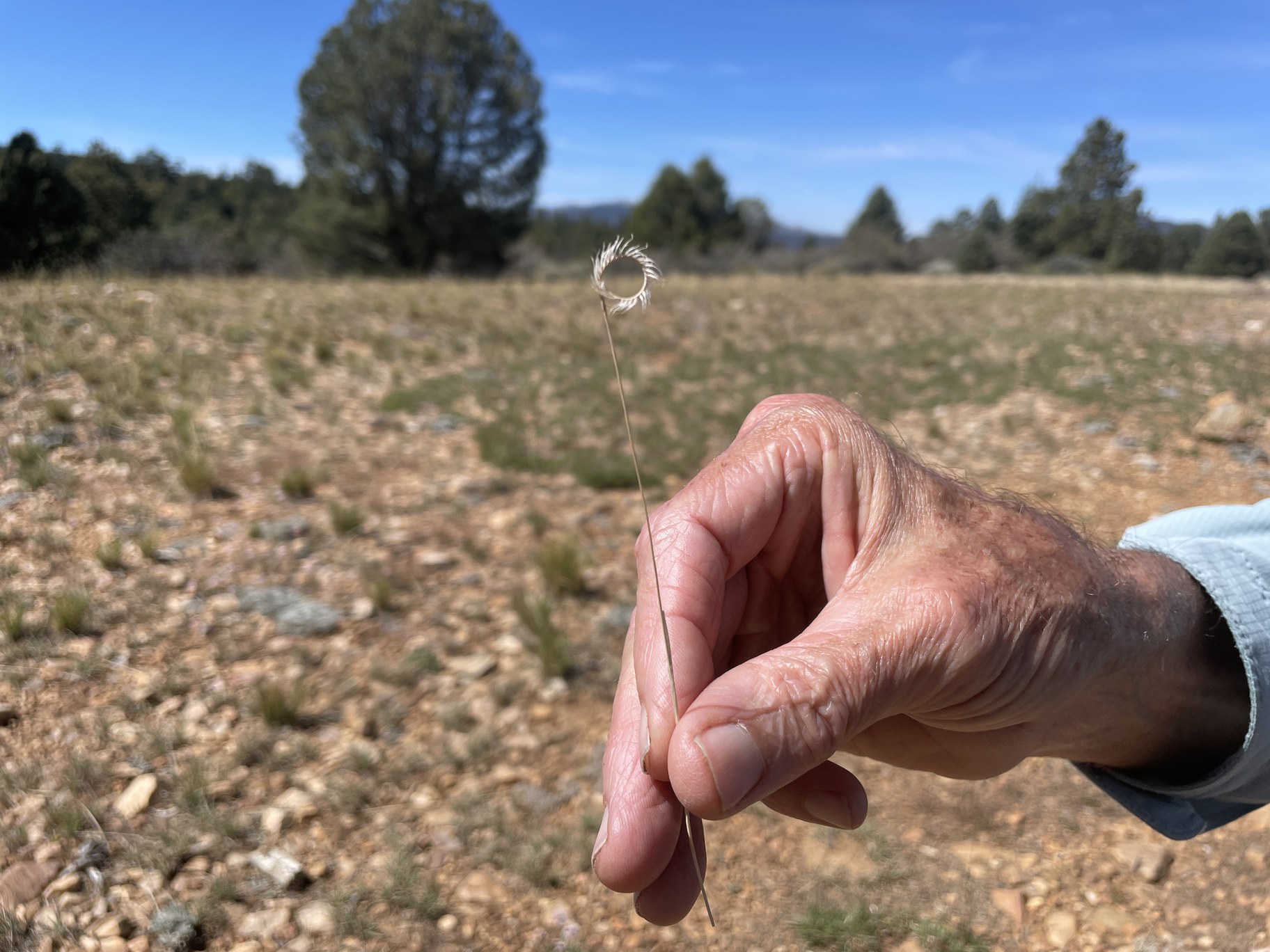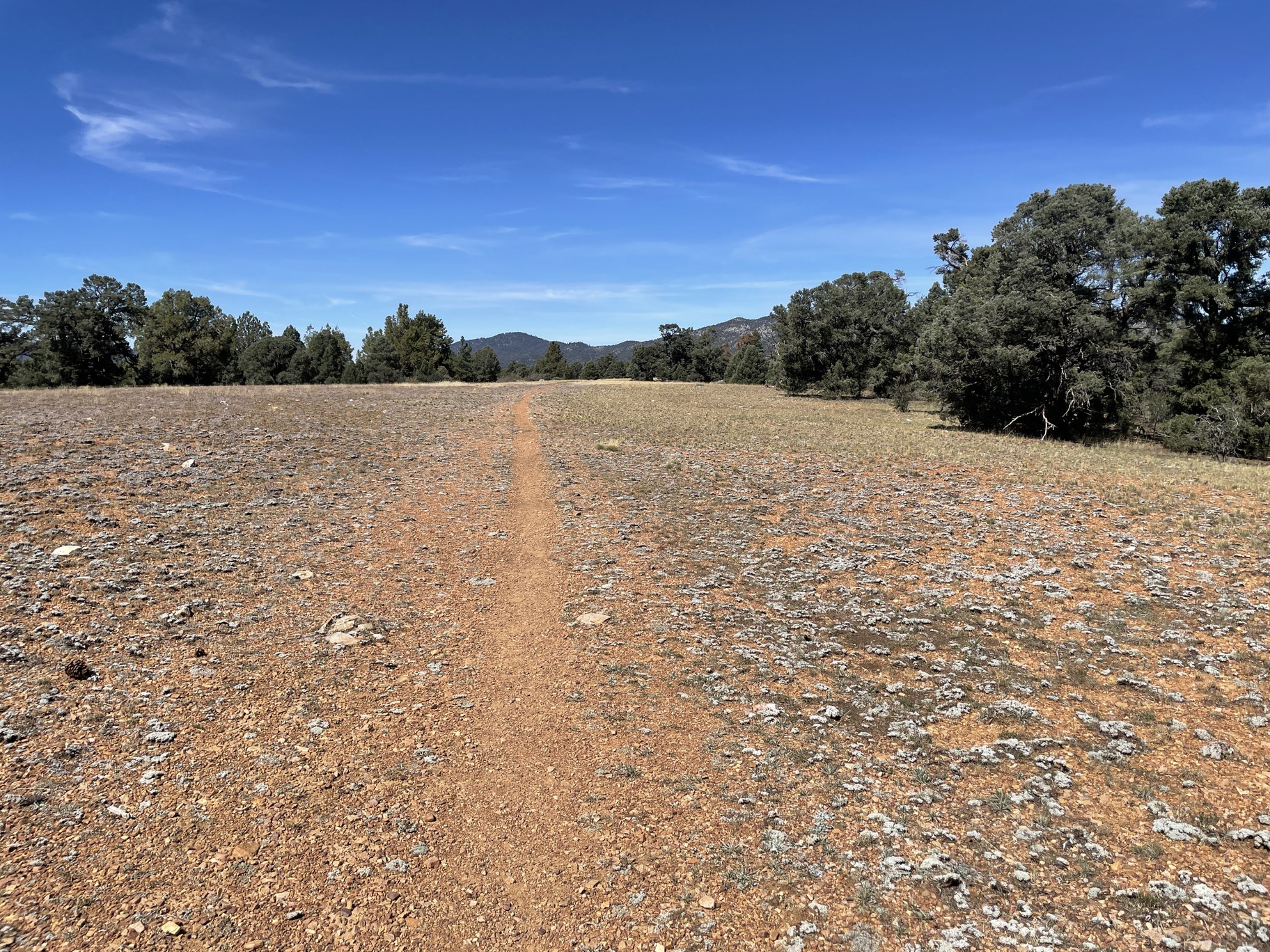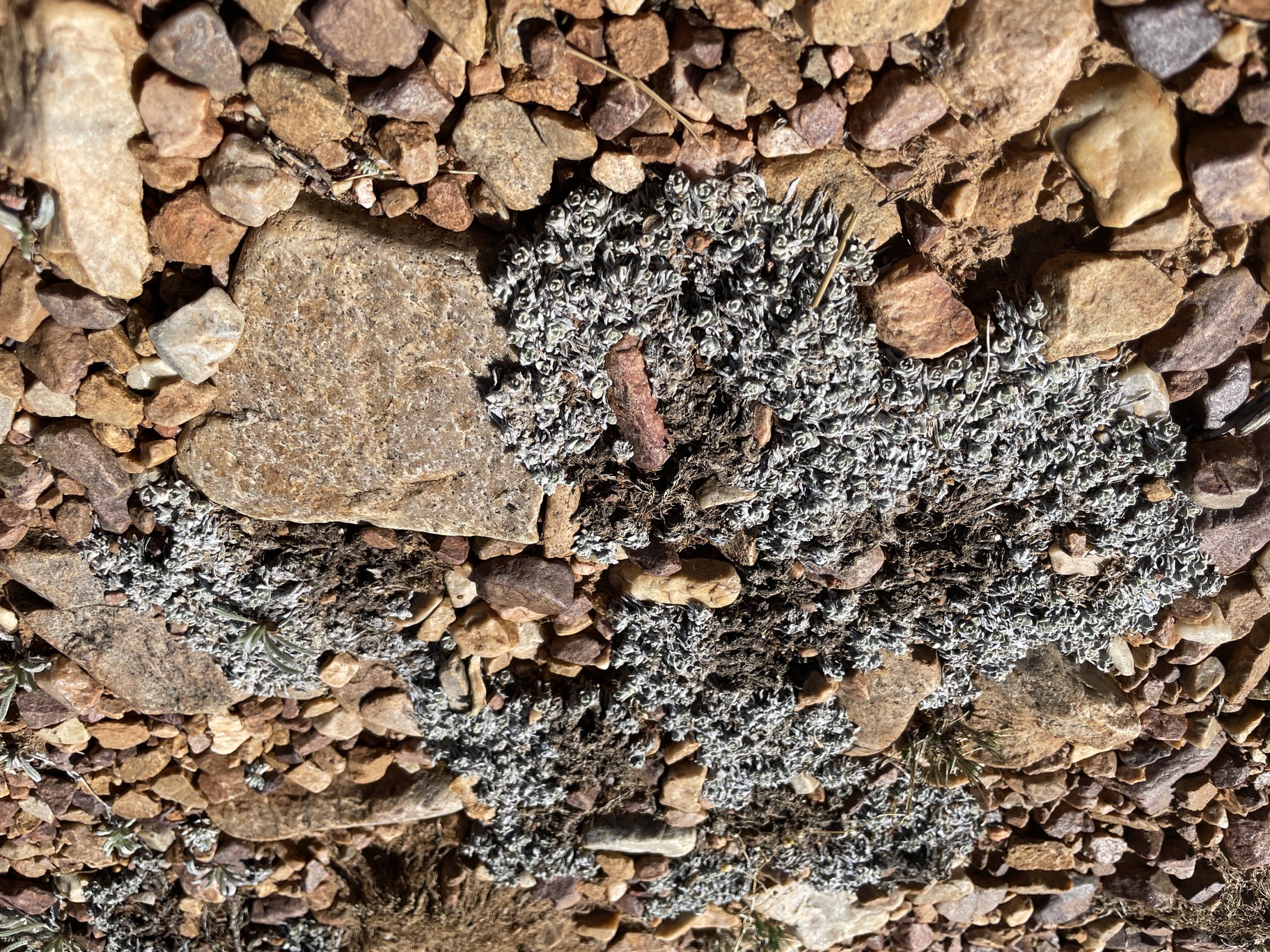At 7,200 feet above sea level, on the tops of just a few San Bernardino Mountains, the trees disappear to make way for small rocks, blinding harsh unprotected sunlight. And on the ground, a thin blanket of tiny plants dare to live in such an unforgiving home.
These are the Pebble Plains, a 1 million-year-old ecosystem that has survived six ice ages. It’s perfectly adapted to a changing climate. And now it’s dying off faster than ever recorded.
As the climate continues to warm, more than a third of plant and animal species face the threat of extinction in the next 50 years. These plants might be among the victims.
University of Redlands Environmental Studies Professor Emeritus Tim Krantz has devoted decades of his life to preserving the Pebble Plains: fighting development, preventing vehicle and hiker traffic from pulverizing them, and documenting the botany here. He’s crushed.
“These resilient plants that have survived for a million years, are only now starting to succumb to climate change,” he says as he crouches in the dirt and gently touches the leaves of one of the plants. “It’s incredibly sad. I feel helpless.”
An unlikely home to thrive

Tim Krantz was the first to give the Pebble Plains ecosystem its official name. Photo by Caleigh Wells.
The biggest buckwheat plants aren’t more than a foot wide and their silver leaves shine like a jacket reflector. They share space with flowers in full bloom that aren’t larger than two millimeters – roughly the thickness of a dime – and others that form a perfect, white circle.
“You have to get down on your hands and knees to really appreciate it,” says Krantz, who gracefully tip-toes onto barren patches to avoid harming the plants. “We've got a half dozen plants that are found only in the world, right on this unique pebble plain habitat.”
During ice ages, the thick clay soil froze and pushed out any tree roots, leaving room for the roots of these teeny tiny plants to take hold.
“The biodiversity per square foot of this pebble plain can easily exceed 20 species in a square foot. It's unrivaled anywhere,” Krantz says. “They're so resilient and perfectly adapted for this environment.”

Mature flower stalks on “grandma grass” turn into a perfect circle. Photo by Caleigh Wells.
Forty-five years ago when Krantz started his work, none of the Pebble Plains were protected. In fact, the Endangered Species Act didn’t even include plants at the time.
The most pressing threat in the 2000s came from a local real estate broker, who saw the clear, flat surface as a perfect place to build. But the 2007 housing market crash saved the ecosystem.
“It's kind of a roll the dice sometimes on this, it really is,” says retiree Jim Miller, the unofficial leader of the effort to preserve the Pebble Plains. “It's pretty expensive to build, and the economy wasn't really supporting that type of development at the time.”
Today the ecosystem is surrounded by fences and signs that beg hikers to heed the rare species living here. But now they're facing their biggest threat.

One of the largest remaining pebble plains is protected on US Forest Service land. Photo by Caleigh Wells.
Krantz says starting just a few years ago, he began seeing as many as half the plants die. “I've spent most of my life trying to work on protecting this unique ecosystem,” he laments. “What can we do? Even when these are protected and fenced and fully secured, we're losing them.

Massive dieoff of Kennedy’s Buckwheat has recently appeared as the climate continues to warm. Photo by Caleigh Wells.
